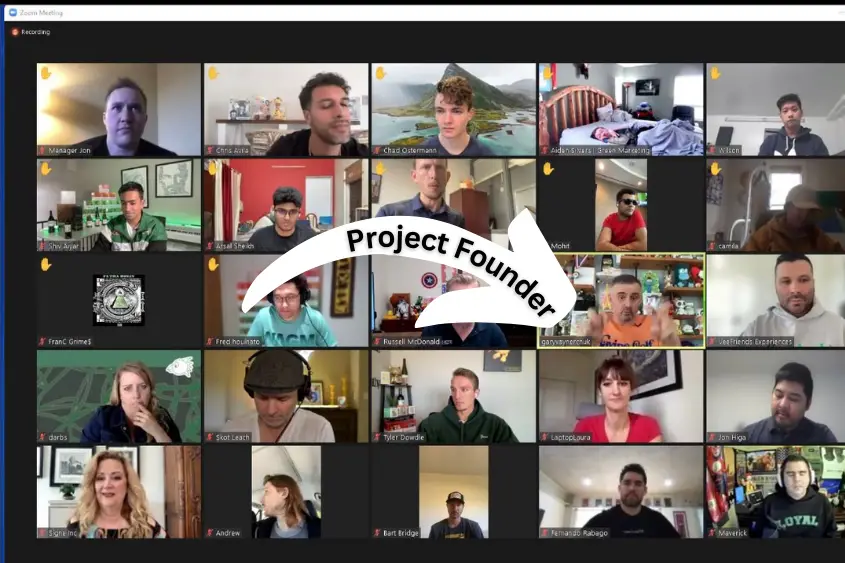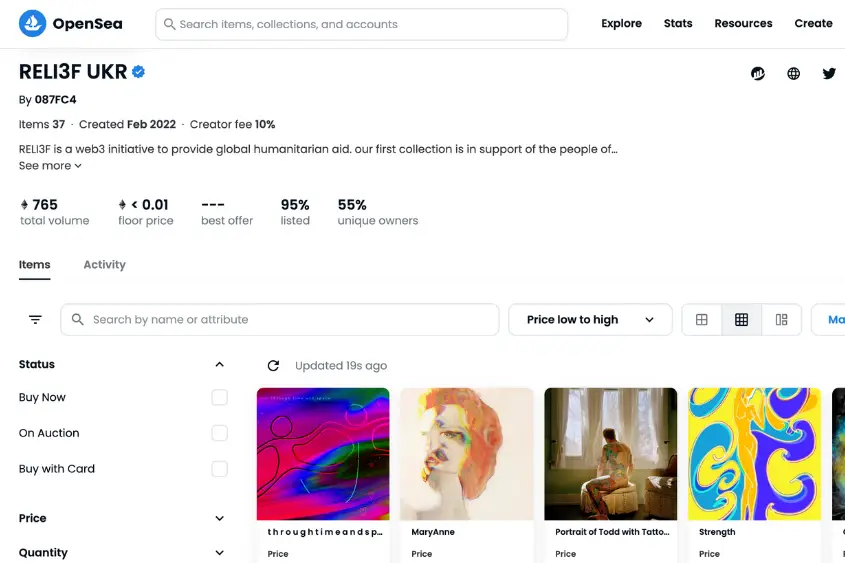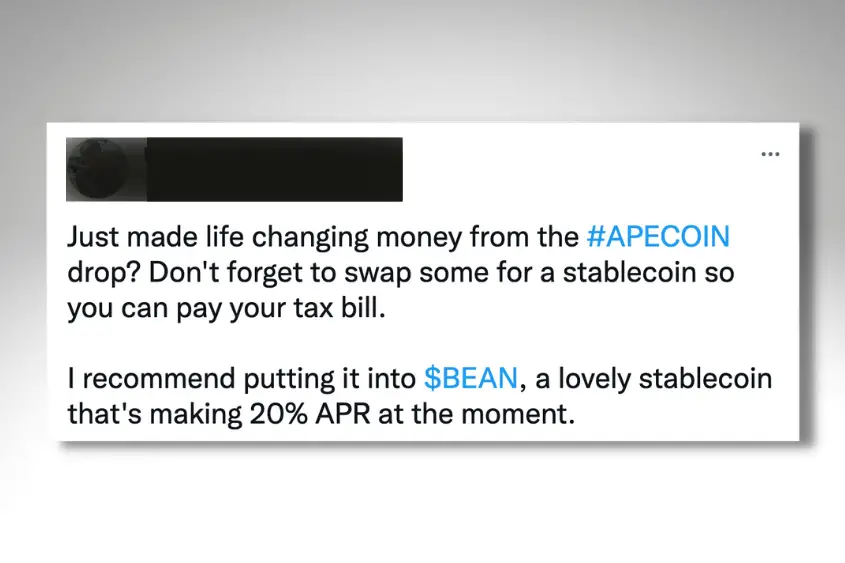Adding utility to an NFT doesn’t have to be difficult. There are a number of ways that you can easily offer your holders value through various forms of utility.
Having bought a few NFTs over the years, I’ve learned exactly how creators add utility to their NFTs to create a better experience for their consumers.
Let’s take a look at how you can add utility to an NFT.
How to Add Utility to an NFT
You can add utility to an NFT by providing additional products, services, consulting, and exclusive access to holders. If you are looking to add utility to an NFT, be sure that it makes sense for your niche. For example, if you create a fashion NFT, the utility should be in the realm of fashion.
Here are 9 ways you can add utility to any type of NFT.
1. Include Free Merchandise
Merchandise was one of the earliest forms of utilities offered to NFT holders. Likely because a physical product compliments its digital counterpart.
The type of merchandise you offer to your holders greatly depends on the type of NFT you’ve created.
If you create a sport-themed NFT, perhaps you can create a jersey or baseball cap that would be given to holders. Of course, merchandise isn’t limited to clothing items.
Examples of merchandise include:
- Clothing
- Accessories
- Toys
- Physical Prints
- Stickers
The main goal is to provide your holders with merchandise that makes sense for your brand. Also, make sure that it’s free (including the cost of shipping).
2. Provide a Service

Providing a service is arguably one of the most valuable forms of utility you can add to your NFT. But, only if the service makes sense and your holders would find value in it.
For example, if you are a personal trainer, you can offer personal training sessions with every NFT that someone purchases.
That said, people who purchase your NFT likely aren’t always going to be someone who is local to you.
So, you can offer training videos and personalized critiques to each of your clients via the internet. Offering a service makes sense for a lot of brands. Here are some other niches that I see fit for providing a service.
- Food (cooking lessons)
- Art (art lessons)
- Music (music lessons)
- Sports (sports lessons)
- Consulting (offer your expertise via a consultation)
Providing a service also helps you to build a better relationship with your consumers.
Plus, you can charge more for your expertise and one-on-one critiques. That also means you don’t have to sell as many NFTs to make as much profit.
Instead, you just focus on providing the best possible service to a small group of people.
3. Grant Exclusive Access to Events and Meetups

Granting your token holders exclusive access to IRL events and meetups is a huge value add.
That said, an event doesn’t mean you have to rent out an entire stadium. Instead, you can host a banquet at a nice restaurant in a specified city.
Or, you can choose a park where you and your holders could gather to create art together. The opportunities are truly endless.
With that, unless your consumers are extremely dedicated to you and your brand, it’s unlikely that everyone will show up to an IRL event due to travel costs and time restrictions.
A good option to increase the outcome of IRL events is to take a community poll. Ask your holders where they’d prefer to meet up.
That way, you can plan accordingly and provide the most value to everyone who’s invested in your NFT.
4. Donate to Charity

Regardless of the type of NFT you create, donating to charity is always a favorable utility. It’s easy to implement, and it can have the greatest impact compared to other utilities.
There are a few ways you can decide which charity to donate to. One way is to simply choose the charity that best resonates with the NFTs you offer. So, if your NFT is based around art, choose an art charity that is meaningful to you.
It’s likely that your community will also find the charity you choose meaningful so as long as it resonates with your project.
Also, you can just as easily ask your holders which charity they prefer. A good option is to choose 5 of your favorite charities and then take a poll to see which one is most preferred.
Although a charitable donation isn’t a utility that’s directly provided to NFT holders, it’s still valuable.
Not only because you are helping support a good cause, but so are the people who support and believe in you. And that’s a good feeling for everyone.
5. Provide Access to Metaverse Events

The metaverse might not be super popular right now, but that doesn’t mean it’s not a viable option to add utility to an NFT.
Metaverses like Decentraland and Cryptovoxels are free to use and easily accessible to anyone with a computer and internet.
You can even hire musicians to perform in the metaverse, play games, and enjoy conversations with each other.
If you want to host an event, however, you will likely need to find someone with some land in the metaverse where you want to host it.
Social media platforms like Twitter are your best bet for finding virtual landowners and performers who can entertain in the metaverse.
If you don’t want to host a huge and extravagant virtual party, you can simply choose a metaverse to meet in and provide your NFT holders with the exact coordinates of where you’ll be.
Hosting an event in the metaverse is a good opportunity to build community and get to know each other better.
6. Offer Your Holders Voting Rights
Giving your holders voting rights is the perfect utility to add. How does this work? Basically, for each NFT someone owns they get one vote. So, those who own the most NFTs have the strongest voting power.
But, what is there to vote on? Well, there are many decisions made by brands on a daily basis.
Giving your consumers the power to vote on such topics can help you create a greater product and provide a better service.
After all, your consumers are literally telling you what they want and how they want it.
At the same time, holders of your NFT find it valuable because they get to help build the brand and create a better experience for themselves. It’s a true win-win situation.
7. Airdrop NFTs to Holders

An NFT airdrop simply means to offer your holders an additional token for free. I’ve seen many projects try to implement this utility and fail.
Remember, the main goal of adding utility to an NFT is to provide value to your consumers.
If the only utility your NFT offers is an airdrop of another valueless token, then there’s no point to do it.
For an airdrop to be considered valuable, you need to have either already built an established and well-liked brand or you need to partner with someone who has.
Let’s say I create NFT art and I’m an up-and-coming artist. So far, the only value I’ve provided to my holders is my artwork in the form of a digital asset. Great!
But, I can’t just create another piece of art and airdrop it to my holders and expect them to be ecstatic.
However, what if I partnered with an artist like Beeple or FEWOCIOUS to create the NFT that is to be airdropped to my holders? That would be epic!
Why?
Because people value Beeple’s and FEWOCIOS’s work more than mine.
Hence, collaborating with other communities and respected figures is valuable.
Also, you could consider airdropping a token that provided utility in itself. Using the same example, perhaps I could airdrop my holders’ NFT art and send them a physical signed copy of the artwork.
8. Host an Ask-Me-Anything (AMA)
Providing holders with an AMA is an undervalued utility you can easily add to any NFT.
Your consumers are interested in getting to know you and hearing your story. They want to know how you got to where you are. By hosting an AMA session, they can ask you just that.
An AMA is extremely valuable because you’re laying all of your knowledge out on the table and holding nothing back. Again, this should be specific to your niche.
So, if you use to be a 5-star chef at one of the most coveted restaurants in the world, your holders will likely ask you questions about how you got to that point (assuming this is what your NFT project is built around).
Then with your knowledge, you can give them actionable tips and words of advice to help them accomplish their goals. Plus, you get to build a more personalized relationship with your collectors.
9. Give Out Whitelist Opportunities
Giving out whitelist opportunities to your holders is a good way to add additional utility to any NFT.
A whitelist is an early-access pass to NFT drops and other exclusive opportunities. Getting on a whitelist means that you get first dibs on buying a new product or minting the latest NFT.
With that, if you have plans to create a second NFT collection in addition to your first, granting your current holders whitelist access can be of great value, especially if there is high demand for your product and services.
Furthermore, you can grant your holders whitelist access to someone else’s NFTs or products.
By partnering with another brand or creator you both benefit from the cross-promotion of each other’s brands, plus your holders will thank you for the early access.
Examples of NFTs With Utility
It’s always nice to have a reference to help decide what utility you should add to your NFT and how you might want to implement it.
Below are some of the top NFT projects that have offered their holders insane utility.
VeeFriends

Undoubtedly, the VeeFriends NFT project created by serial entrepreneur, Gary Vaynerchuk, is the most value-driven NFT on the market.
Every single NFT from the 10,000-piece collection provides holders plenty of utility, including access to VeeCon—a mega-conference held in various locations for three consecutive years—in addition to a free claim of the VeeFriends Series 2 NFTs.
Furthermore, various NFTs from the collection grant holders with virtual and in-person group meetings with Gary, one-on-one sessions, and free physical products as well.
If you are looking for a supreme example of how to add utility to an NFT, check out VeeFriends.
Bored Ape Yacht Club (BAYC)
Bored Ape Yacht Club is considered one of the most prestigious NFT projects around. Partially because they have continually created value for their holders via various perks.
Owners of BAYC NFTs have enjoyed an array of utilities including private online spaces, limited-edition merchandise, members-only live events, and even an airdrop of ApeCoin (the project’s native currency).
This airdrop allowed each holder to claim 10,094 tokens per BAYC NFT they own, at a price of $18.29 per token. That’s $184,620 given per NFT!
Of course, this is an extreme example of a utility that not everyone will be able to accomplish right off the bat. But, it’s a proper example nonetheless.
NFT Academy
NFT Academy is a great example of a project that provides service and informational-based utilities. Holders of this NFT can learn how to build, market, grow, and sell their own NFTs.
The utility for holding an NFT Academy pass includes access to a private circle where you can learn how to develop and market NFTs through live training. Plus, you gain access to a private chat to ask experts questions.
Moreover, all holders have the ability and are encouraged to network with each other.
This is one of the simplest ways to add utility to an NFT. If you have valuable information about your niche, you can build utility around that info and deliver it to your consumers.
How to Add Utility to NFTs Takeaway
Adding utility to an NFT is a matter of determining how you can best provide value to your holders. Below is an overview of the most practical ways to add utility to any NFT.
- Free Merchandise
- Services
- Access to Events and Meetups
- Donate to Charity
- Access to Metaverse Events
- Voting Rights
- Airdrops
- Ask-Me-Anything (AMA)
- Whitelist Opportunities

8 thoughts on “9 Practical Ways to Add Utility to An NFT Instantly”
Comments are closed.